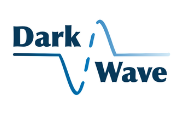Views: 310
Project description
Hot on the trail of promising dark matter candidates
Almost all energy stored in our universe exists as forms of dark matter and dark energy, yet we know very little about either. It appears to interact mainly through the force of gravity and is likely composed of elementary particles that we have not yet identified. Experiments resolving the mysterious nature of dark matter take us beyond current descriptions of elementary particles and the forces that govern their interactions. The EU-funded DarkWave project is hot on the trail of promising dark matter candidates, Weakly Interacting Massive Particles (WIMPs), whose direct detection would revolutionise our understanding of the universe. It will also apply technologies developed for this purpose to other key physics topics: gravitational waves and properties of neutrinos.
Objective
Experimental astroparticle physics is currently one of the most vibrant and exciting areas of fundamental physics and in the coming decade there is a real potential to experimentally resolve two remaining big puzzles in our understanding of the Universe: the nature of dark matter (DM) and the Baryon Asymmetry of the Universe (BAU, i.e. why there is more matter than antimatter).
We currently do not know what is the nature of 95% of the energy density of our Universe. Astronomical observations tell us that at least 23% of the unknown density should behave like matter – as we cannot see it, we call it dark matter. The exact nature of DM (and dark energy) is still unknown and its origin is at present one of the most important questions in physics. Particle physics beyond the Standard Model provides several candidate particles which could be the DM. Out of these, Weakly Interacting Massive Particles (WIMPs) are the best motivated. Discovering them would be a major breakthrough and a sign of physics beyond the Standard Model.
The DarkWave consortium aims to make key contributions towards this discovery by: building DarkSide-20k, the next generation experiment searching for dark matter via elastic scattering of dark matter particles in liquid argon (LAr), with sensitivity two orders of magnitude beyond current searches at ~1 TeV/c2 WIMP mass, developing new technologies for ARGO and DarkSide-LM, the ultimate detectors, able to probe the full parameter space where WIMPs can be found. It will also exploit technological synergies with two other key areas in astroparticle physics: long-baseline neutrino oscillation experiments (DUNE) and gravitational wave detection.
